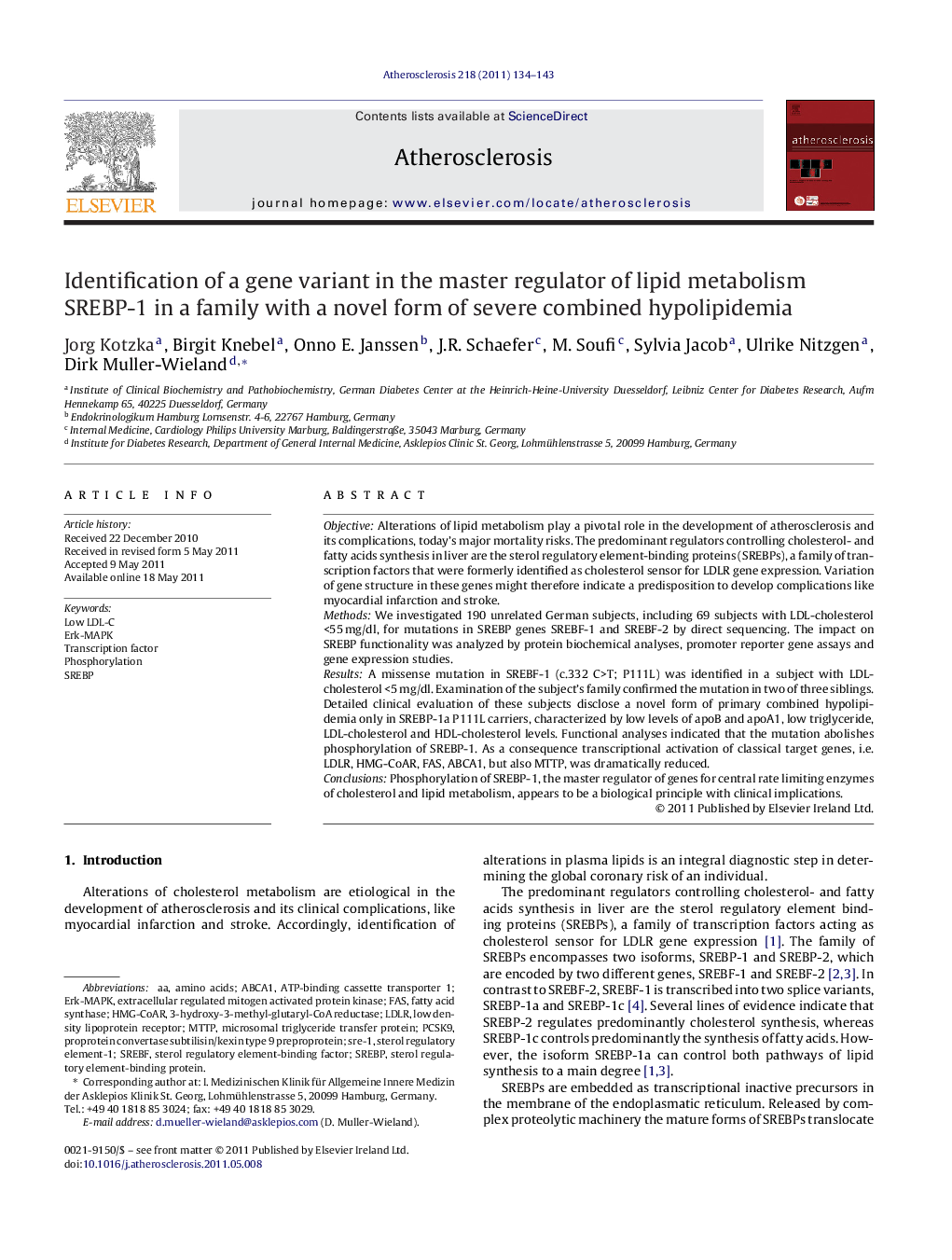| Article ID | Journal | Published Year | Pages | File Type |
|---|---|---|---|---|
| 5950547 | Atherosclerosis | 2011 | 10 Pages |
ObjectiveAlterations of lipid metabolism play a pivotal role in the development of atherosclerosis and its complications, today's major mortality risks. The predominant regulators controlling cholesterol- and fatty acids synthesis in liver are the sterol regulatory element-binding proteins (SREBPs), a family of transcription factors that were formerly identified as cholesterol sensor for LDLR gene expression. Variation of gene structure in these genes might therefore indicate a predisposition to develop complications like myocardial infarction and stroke.MethodsWe investigated 190 unrelated German subjects, including 69 subjects with LDL-cholesterol <55Â mg/dl, for mutations in SREBP genes SREBF-1 and SREBF-2 by direct sequencing. The impact on SREBP functionality was analyzed by protein biochemical analyses, promoter reporter gene assays and gene expression studies.ResultsA missense mutation in SREBF-1 (c.332 C>T; P111L) was identified in a subject with LDL-cholesterol <5Â mg/dl. Examination of the subject's family confirmed the mutation in two of three siblings. Detailed clinical evaluation of these subjects disclose a novel form of primary combined hypolipidemia only in SREBP-1a P111L carriers, characterized by low levels of apoB and apoA1, low triglyceride, LDL-cholesterol and HDL-cholesterol levels. Functional analyses indicated that the mutation abolishes phosphorylation of SREBP-1. As a consequence transcriptional activation of classical target genes, i.e. LDLR, HMG-CoAR, FAS, ABCA1, but also MTTP, was dramatically reduced.ConclusionsPhosphorylation of SREBP-1, the master regulator of genes for central rate limiting enzymes of cholesterol and lipid metabolism, appears to be a biological principle with clinical implications.
